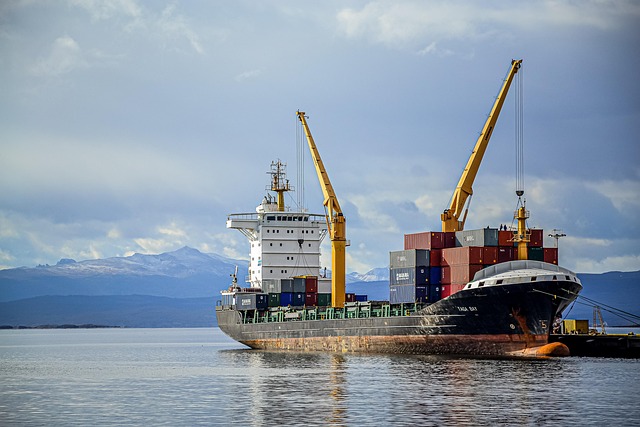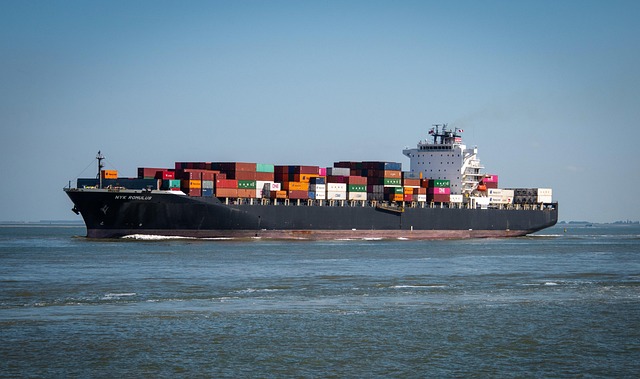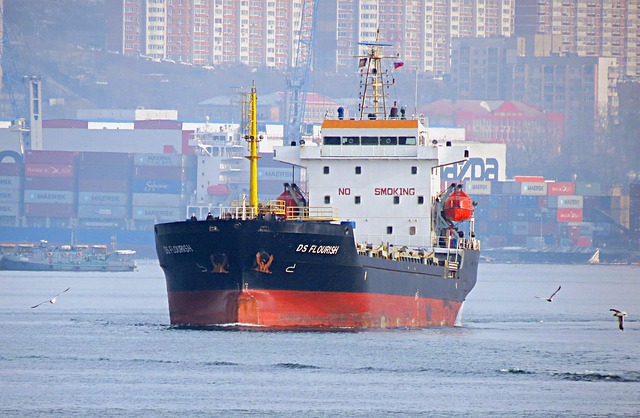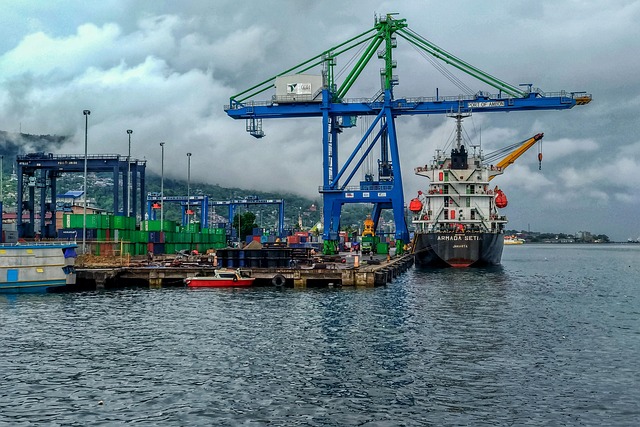Heavy-load shipping containers streamline transportation of oversized equipment across various modes, offering flexibility with types like standard ISO, high cube, flat rack, and refrigerated. Their modular design optimizes space, while leasing services provide accessibility for short or long-term use. Container dimensions and capacity, tailored to specific cargo needs, ensure efficient global supply chain management, reducing costs and time compared to traditional methods.
In today’s globalized world, transporting oversized equipment across borders is a significant challenge. Heavy load shipping containers have emerged as a game-changer in the logistics industry, offering efficient and cost-effective solutions. This article explores the advantages of using shipping containers for oversized equipment transport, delving into their dimensions, weight capacities, and safety measures. By understanding these key aspects, businesses can navigate the complexities of international shipping with confidence.
- Understanding Heavy Load Shipping Containers
- Advantages of Using Oversized Equipment Transport
- Container Dimensions and Weight Capacity
- Safety Measures for Efficient Oversized Cargo Shipping
Understanding Heavy Load Shipping Containers

Heavy load shipping containers are specialized intermodal containers designed to securely transport oversized or unconventional equipment and cargo across various modes of transport. These robust freight containers come in diverse types, each tailored for specific needs. For instance, the standard ISO container is a versatile sea container with a proven track record in global shipping, while high cube containers offer increased internal space without compromising strength.
Container leasing and rental services have made it accessible for businesses to utilize these structures for short-term or long-duration transport needs. Their modular design allows them to be stacked and secured on flat rack, open top, or refrigerated shipping crates, ensuring efficient container transport and storage solutions. Understanding the dimensions and capacity of these containers is crucial when planning heavy load shipments to optimize space and prevent damage to delicate cargo.
Advantages of Using Oversized Equipment Transport

Using heavy load shipping containers for oversized equipment transport offers several significant advantages. Firstly, it allows for the efficient movement of large and bulky items that would be challenging or impossible to transport using standard cargo or freight containers. This is particularly beneficial for industries like construction, mining, and manufacturing, where specialized equipment needs to be moved over long distances. By utilizing these specialized shipping containers, companies can streamline their logistics operations, reducing time and costs associated with traditional transport methods.
Another key advantage is the flexibility they offer in terms of container leasing or rental services. Many providers offer a range of container types, including flat rack, open top, high cube, refrigerated, and even office or storage containers, catering to diverse cargo needs. These versatile shipping containers can be adapted for various purposes, making them a cost-effective solution for businesses that require temporary storage or specialized transport for unique items. Container shipping also facilitates intermodal transportation, enabling seamless transitions between land, sea, and rail modes of transport, which is crucial for global supply chain management.
Container Dimensions and Weight Capacity

Shipping containers come in a variety of dimensions and weight capacities, tailored to accommodate different types of freight. The most common size is the 20-foot (6m) ISO container, which offers a standard load capacity of approximately 25,400 pounds (11,520 kg). For heavier equipment, larger containers like the 40-foot (12m) high cube or refrigerated containers are available, with weight capacities ranging from 30,000 to 40,000 pounds (13,600 to 18,000 kg) or more. These specialized intermodal containers ensure secure and efficient container shipping, making them ideal for transporting oversized equipment across land and sea.
Container dimensions play a crucial role in defining their capacity. For instance, the interior height of a standard 20-foot container is 7 feet 10 inches (2.4m), while a high cube container has an increased height, allowing for greater vertical load. Moreover, various types of containers, such as open top or flat rack containers, are designed to accommodate specific cargo shapes and sizes, ensuring optimal utilization of space during container transport and rental.
Safety Measures for Efficient Oversized Cargo Shipping

When transporting oversized equipment or cargo that exceeds standard shipping container dimensions, implementing robust safety measures is paramount. This involves meticulous planning and utilizing specialized containers designed for such tasks. For instance, flat rack containers offer an open-topped solution, ideal for heavy machinery with exposed upper surfaces. Alternatively, high cube containers maximize vertical space, accommodating taller freight without compromise.
Container leasing companies often provide crucial services, offering a range of modular options like refrigerated or office containers for added versatility. Proper securing of cargo within the shipping container is fundamental to prevent shifting during transport. This includes utilizing straps, chains, or specialized equipment tailored to the unique shape and weight distribution of the oversized item. Furthermore, adhering to ISO container dimensions ensures compatibility across different modes of transportation, facilitating seamless intermodal container shipping.
Heavy load shipping containers have revolutionized oversized equipment transport, offering numerous advantages from enhanced efficiency to cost savings. By understanding the specific dimensions, weight capacities, and safety measures involved, businesses can navigate the process seamlessly. These containers are a game-changer in today’s world, ensuring the secure movement of large machinery and equipment globally, making them an indispensable asset for international trade.
